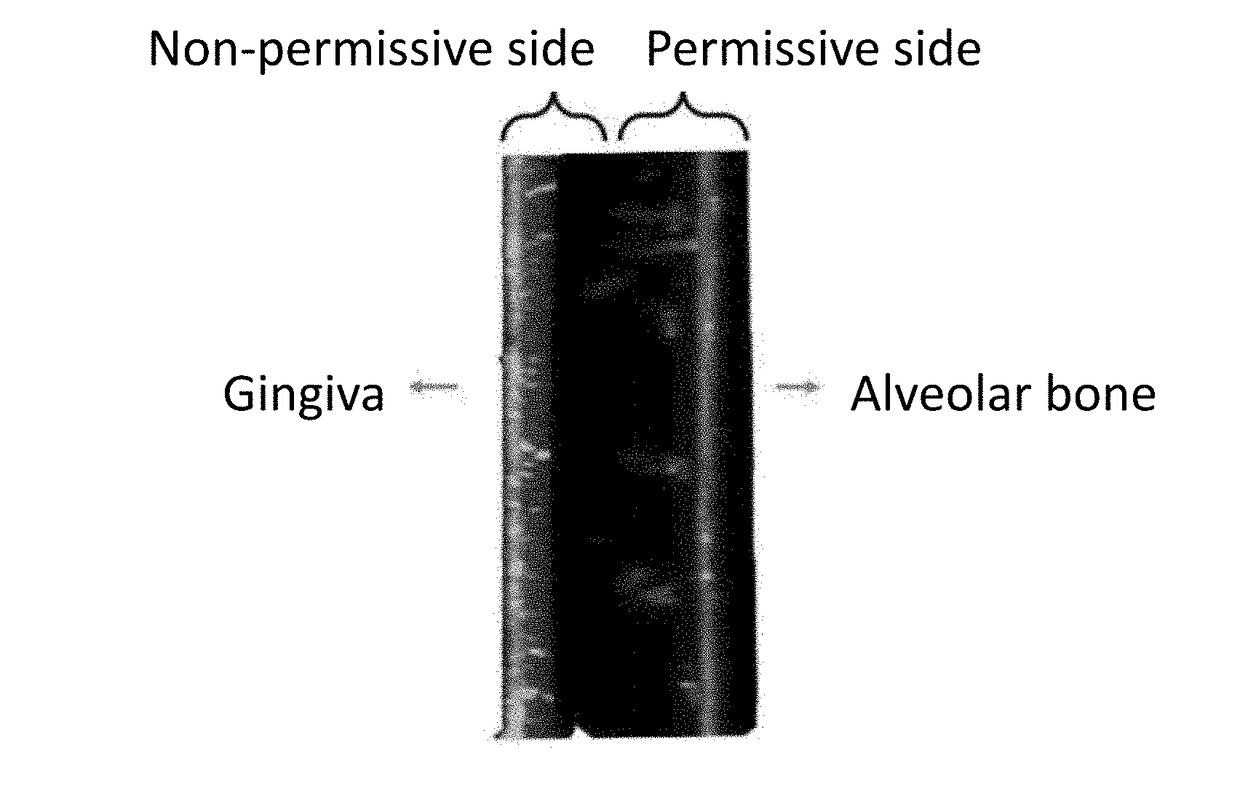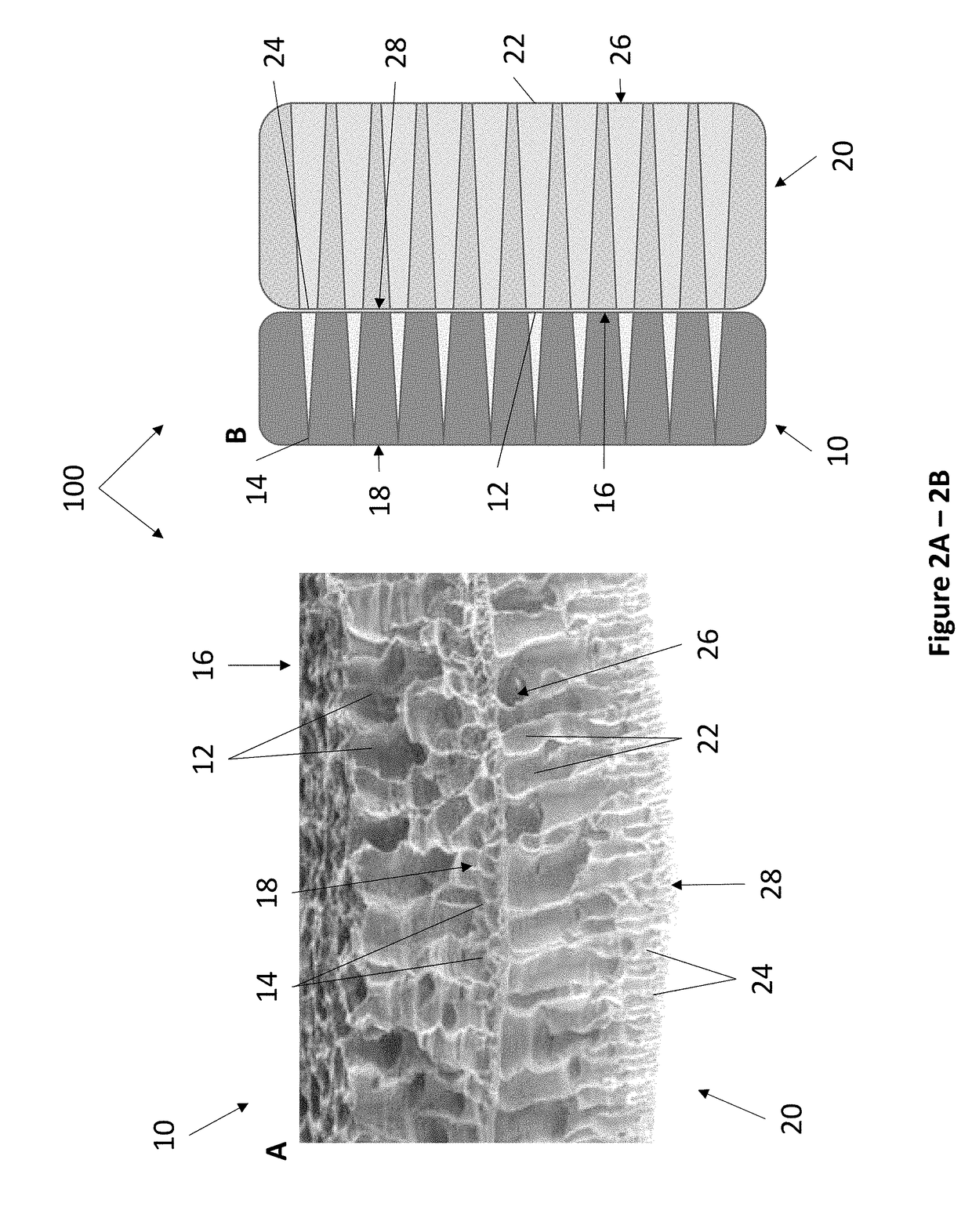Biomimetic Scaffold for Regenerative Dentistry
a biomimetic and dental technology, applied in biochemistry apparatus and processes, skeletal/connective tissue cells, prostheses, etc., can solve the problems of tooth loss, tooth loss, and progressive destruction of tooth supporting tissues
- Summary
- Abstract
- Description
- Claims
- Application Information
AI Technical Summary
Benefits of technology
Problems solved by technology
Method used
Image
Examples
experimental examples
[0133]The invention is further described in detail by reference to the following experimental examples. These examples are provided for purposes of illustration only, and are not intended to be limiting unless otherwise specified. Thus, the invention should in no way be construed as being limited to the following examples, but rather, should be construed to encompass any and all variations which become evident as a result of the teaching provided herein.
[0134]Without further description, it is believed that one of ordinary skill in the art can, using the preceding description and the following illustrative examples, make and utilize the compounds of the present invention and practice the claimed methods. The following working examples therefore, specifically point out the preferred embodiments of the present invention, and are not to be construed as limiting in any way the remainder of the disclosure.
example 1
Tailoring Porous Degradable Biomaterials for Guided Tissue Regeneration in Regenerative Endodontics
[0135]Regenerative Endodontics (RE) is a biologically based procedure to create a new pulp-dentin complex (PDC) in the root canal system (FIG. 13). RE applies principles of regenerative medicine and tissue engineering, utilizing a combination of stem cells, 3-D scaffolds, and growth factors. The spatial control of regenerating tissue is currently a major challenge in RE. The purpose of this study was to develop a biodegradable directional porous scaffold that can address this challenge. This feature supports directional cell penetration and helps regain cellular organization as seen in native PDC.
[0136]Solvent casting processes were used to develop a poly (lactic-co-glycolic) acid (PLGA) based scaffold. PLGA was solvated in dimethyl sulfoxide (DMSO) at 12% and 20% (w / v) to create two scaffolds having two distinct pore morphologies. A third scaffold was created by laminating the two afo...
PUM
| Property | Measurement | Unit |
|---|---|---|
| thickness | aaaaa | aaaaa |
| thickness | aaaaa | aaaaa |
| diameter | aaaaa | aaaaa |
Abstract
Description
Claims
Application Information
 Login to View More
Login to View More - R&D
- Intellectual Property
- Life Sciences
- Materials
- Tech Scout
- Unparalleled Data Quality
- Higher Quality Content
- 60% Fewer Hallucinations
Browse by: Latest US Patents, China's latest patents, Technical Efficacy Thesaurus, Application Domain, Technology Topic, Popular Technical Reports.
© 2025 PatSnap. All rights reserved.Legal|Privacy policy|Modern Slavery Act Transparency Statement|Sitemap|About US| Contact US: help@patsnap.com



